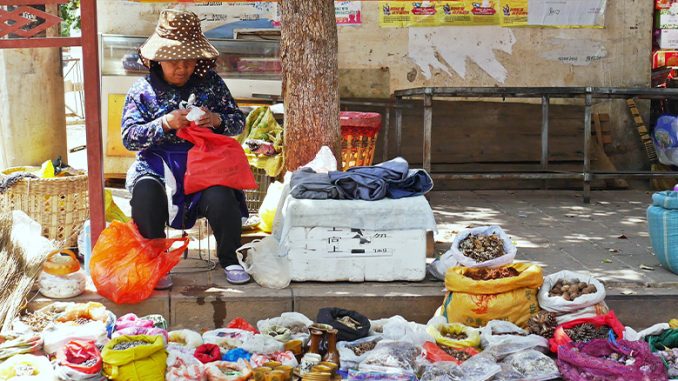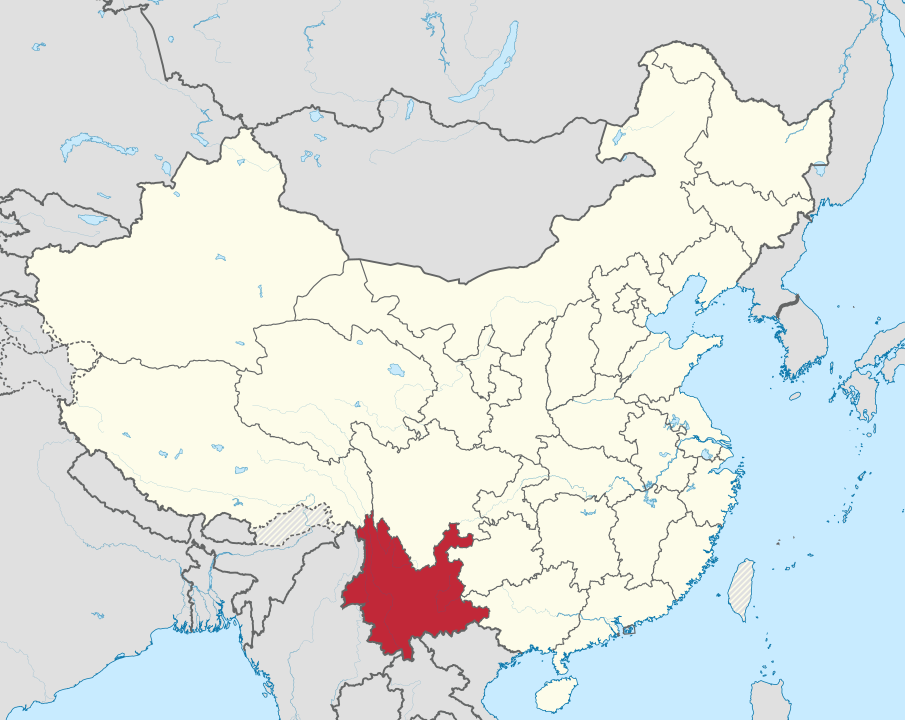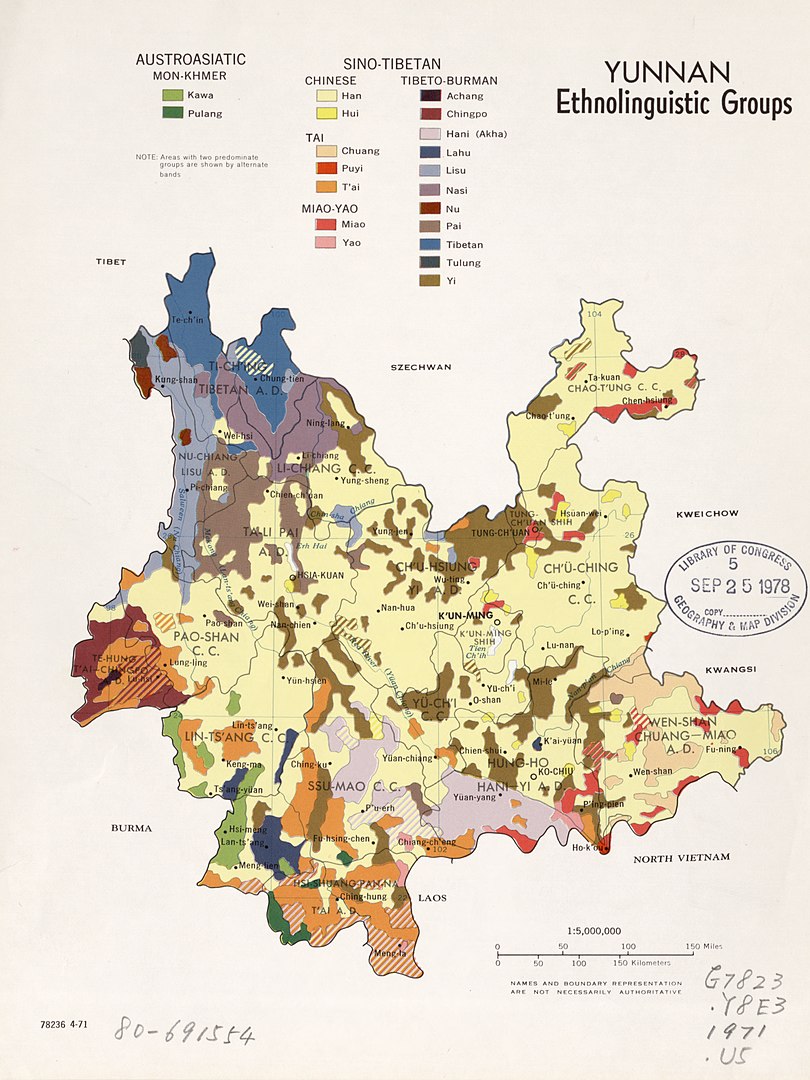
The dual vibrations of “profound changes unseen in centuries” (Wu, 2018) and the Covid-19 pandemic cast severe challenges on the development of globalization. China proposed the Global Development Initiative (GDI) in 2021 (Xinhua, 2022) and initiated the meeting of the Group of Friends of Global Development Initiative for Accelerated Implementation of the 2030 Agenda and internalized the norms of the Community of Common Destiny. Meanwhile, China’s Yunnan province, located on the north of the Indo-China Peninsula, bears responsibility for delivering China’s national strategies, such as the Belt and Road Initiative (BRI), to South Asia and Southeast Asia. Here is a periphery place among the Asian civilizations, alias the fault line according to Samuel Huntington, or could be peacefully addressed as the crossroad of dialogue and Mutual Learning among civilizations (The New York Times, 2007). China as a civilized state is often defined as part of East Asia. For contemporary Southeast Asian studies, Yunnan province is located on China’s southwestern frontier with the most diverse ethnic cultures, and its social-cultural relationship with Southeast Asian civilization cannot be ignored. For the Southeast Asian studies field, how does the Southeast Asian nature of Yunnan enlighten the development of globalization and the construction of the Community of Common Destiny in the Indochina Peninsula?
In the contemporary studies of international relations (IR), Western constructivist scholars, like Alexander Wendt and Amitav Acharya, have propounded that “… construct the mild and harmonious system of IR or community via cultures” (Hutchison, 2006). However, their constructivism neglects the subnational actors in the domestic peripheries. Southeast Asia is a region with diverse religions, politics, and ethnic groups, and simultaneously it is an important cooperation partner of many other regional powers, such as the US, Japan, Korea, and India through different regional mechanisms, as well as China’s BRI. Hence, socio-cultural cooperation is a crucial framing strategy for China to cultivate a sense of Community of Common Destiny with Southeast Asian states. In advancing Sino-Southeast Asian cooperation, such as the China-ASEAN Partnership framework and the Lancang-Mekong Cooperation, the frontier or subnational actor will be the bridge for transboundary cultural exchanges.

Nevertheless, in terms of the cultural narrative or framing, there are divergences from the different views of “center to the periphery,” “periphery to the center,” and “periphery to periphery.” Based on the consensus of current Southeast Asian Studies of international scholarship, regions like Yunnan, Thailand, Cambodia, and Myanmar are the core of Mainland Southeast Asian civilization in terms of the history and ethnic cultures of mainland Southeast Asia. From this point of view, this theory articulates the strategic connotations that China adopts Yunnan to make the radiation center open up to Southeast Asia (Ptak, T., et al. 2022). Nonetheless, one point to be added is that the culture of Yunnan can link maritime Southeast Asia likewise. In the well-proven cases, the bronze drums originated in Yunnan but are shared with Southeast Asians, and the Acharya Avalokiteshvara derived from Southeast Asia but thrived in Yunnan. Under China’s increasing influence in the neighborhood, the concept of the Southeast Asian nature of Yunnan will significantly impact multiple-realizable approaches for the construction of a Community of Common Destiny and the development of regionalization.

Yunnan is a crucial case for Southeast Asian Studies in the context of globalization and regionalization. From the views of the regional economic and commercial history of the Indo-China Peninsula, Yunnan had been the land trade route connecting southwestern China with Myanmar and India since the 3rd century BC. Until the 7-13 centuries AD, during the eras of the Nanzhao Kingdom (scholar Christian Daniels has explored its nature of Southeast Asia) (Daniels, 2021), and Dali kingdoms, Yunnan became one of the core land transportation intersections in Asia, including the Shu-Hindu Road, Dian-Viet Corridor, Lancang-Mekong Corridor, and Ancient Tea Horse Road. Today, China’s mega-projects of infrastructures from Yunnan to its neighbors will further promote connectivity between China and ASEAN countries under China’s BRI. While from the global perspective of the periphery-core under the world system theory, Yunnan, with its geographical position compared to other domestic provinces, has been identified as a border province or edge area of southwestern China. Whereas, for the Indo-China Peninsula countries, Yunnan can be one of the core land-linked channels to the market of mainland China and even Central Asia and Europe. Hence, there are certain meanings in thinking of the future global connectivity based on Yunnan’s socio-cultural and geographical affinities with Southeast Asia.

The prominent academic theories, Wolters’s Mandala Political System and Tambiah’s Galactic Polity expound on the significance of peripheries and subregions to the construction of communities from the cases of the construction of ancient civilizations and states in Southeast Asia. However, the paradigm and discourse of Southeast Asian Studies in the past were primarily Western-centric. As the centurial profound changes and pandemic merged, Eastern knowledge and cases are beginning to be increasingly applied to global discourse and academic paradigms. The development of Southeast Asian Studies and community consciousness under the globalization context needs the Eastern cases and local knowledge to support it. For instance, Vietnam is an appropriate case for studying the harmonious coexistence of Hindunisation, Sinicization, and globalocalisation in Southeast Asia. Vietnam is on the peripheries of Buddhism and the Sinic culture, from which the influence of Sinic culture on northern Vietnam is greater than that of the southern (early Chinese influences on Vietnam 111 B.C-A.D. 938). In contrast, southern Vietnam is impacted greatly by Khmer Buddhism. From this regard, one point should consider whether the research case of Vietnam is helpful to constitute new case studies of the Southeast Asian nature of Yunnan in the future. Meanwhile, from China’s point of view, whether the historical and cultural research on the Nanzhao and Dali kingdoms will enhance the mutual exchanges of Sino-Southeast Asian civilizations and improve the construction of China’s soft power in the Mekong subregion?
For mainland Southeast Asia, as a geopolitical hotspot in the Asia-Pacific region, several regional cooperation mechanisms are operating in this region, such as the Mekong-US Partnership, Mekong-Japan Partnership, and the Greater Mekong Subregion Economic Cooperation. For China, which has made peripheral diplomacy a priority in its diplomatic efforts, China is aware of the role of historical and socio-cultural bonds between its cross-border ethnics in the southwestern province and Mainland Southeast Asia countries that could serve as its soft power. For instance, drawing on the ethnic, religious, historical, and cultural ties of Southwest China, China promotes civilizational dialogue with Southeast Asia in the socio-cultural and humanistic fields under the Lancang-Mekong cooperation framework, which aims to enhance the Sino-Southeast Asian people-to-people exchanges and social inclusiveness. One good example is that Yunnan together with Myanmar, Thailand, Laos, and Cambodia are all under the effect of Theravada, perhaps Buddhist public diplomacy will be used as a ‘tool’ to promote deeper dialogue between China and mainland Southeast Asia under the social-cultural bond, thereby paving the way for the realization China’s vision of regional Community of Common Destiny in the Indo-China Peninsula.
Duan Haosheng, & Liu Yunkang
Duan Haosheng, is a Ph.D candidate of the International Development Studies Program at the Faculty of Political Science, Chulalongkorn University. His research interests are Southeast Asian Studies, International Relations, Sociology of Religion, and Ethnology.
Liu Yunkang, has an MA in International Development Studies from the Faculty of Political Sciences, Chulalongkorn University, and MBA in Asia-Pacific Business from NIDA Business School. His research interests are Development Studies in Contemporary Southeast Asia, Asia-Pacific Studies, and International Business and Politics.
Banner image: Unidentified local people selling and buying products at Friday flea market in Shaxi village of the ancient tea horse trade route in Yunnan province, Southwestern China. Photo: Parichart Patricia Wong, Shutterstock
References:
Daniels, C. (2021). Nanzhao as a Southeast Asian kingdom, c.738–902. Journal of Southeast Asian Studies, 52(2), 188-213.
EARLY CHINESE RULE OF VIETNAM (111 B.C. TO A.D. 938). Facts and Details. Last updated May 2014. Retrieved October 01, 2022 from https://factsanddetails.com/southeast-asia/Vietnam/sub5_9a/entry-3332.html
Hutchison, C. B. (2006). Cultural constructivism: the confluence of cognition, knowledge creation, multiculturalism, and teaching. Intercultural Education, 17:3, 301-310.
NewYork Times. (2007). The fault lines of civilizations – Opinion – International Herald Tribune. NewYork Time-Opinion. Retrieved September 23, 2022 from https://www.nytimes.com/2007/01/02/opinion/02iht-edgreen.4077201.html
Ptak, T., Laine, J. P., Hu, Z., Liu, Y., Konrad, V., & van der Velde, M. (2022). Understanding borders through dynamic processes: capturing relational motion from south-west China’s radiation center. Territory, Politics, Governance, 10:2, 200-218.
Wu. (2018). Interpreting the World’s “Greatest Changes in a Century”. China-US Focus. Retrieved September 20, 2022 from https://www.chinausfocus.com/foreign-policy/interpreting-the-worlds-greatest-changes-in-a-century
Xinhua. (2022). Global Development Initiative: “No country should be left behind. Xinhua News. Retrieved September 08, 2022 from https://english.news.cn/20220922/20810cb50d924813a129b38541734988/c.html
